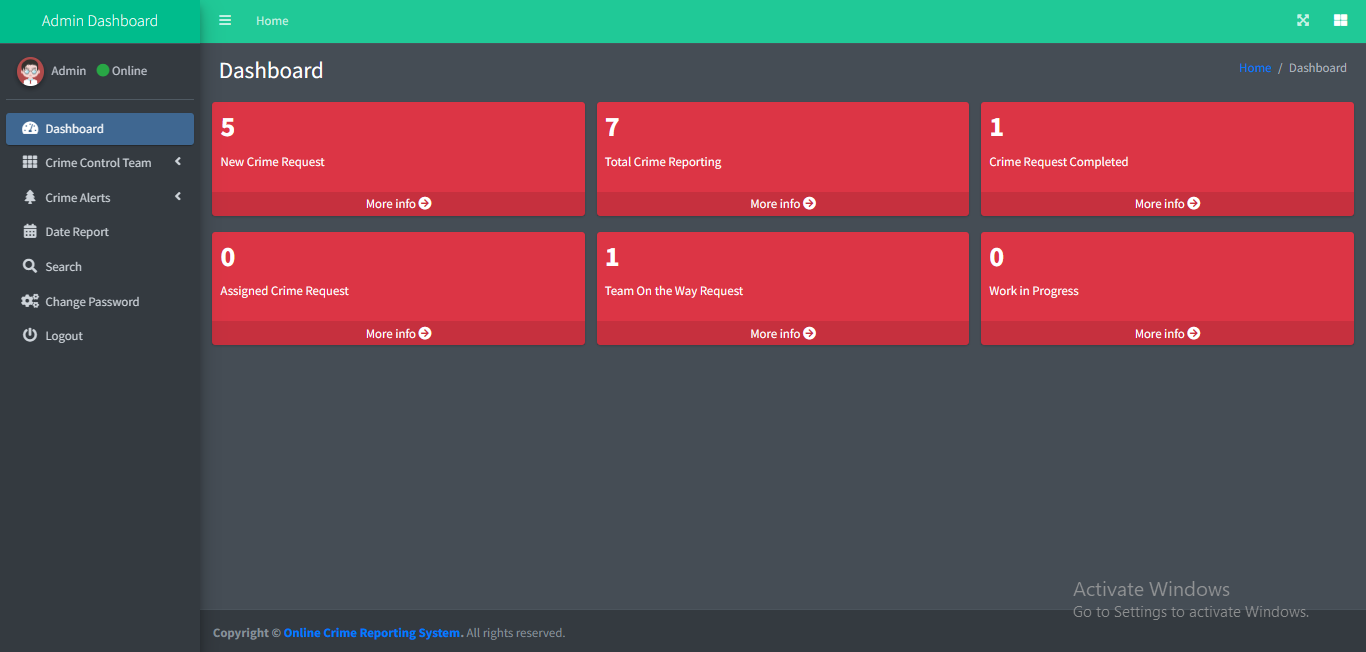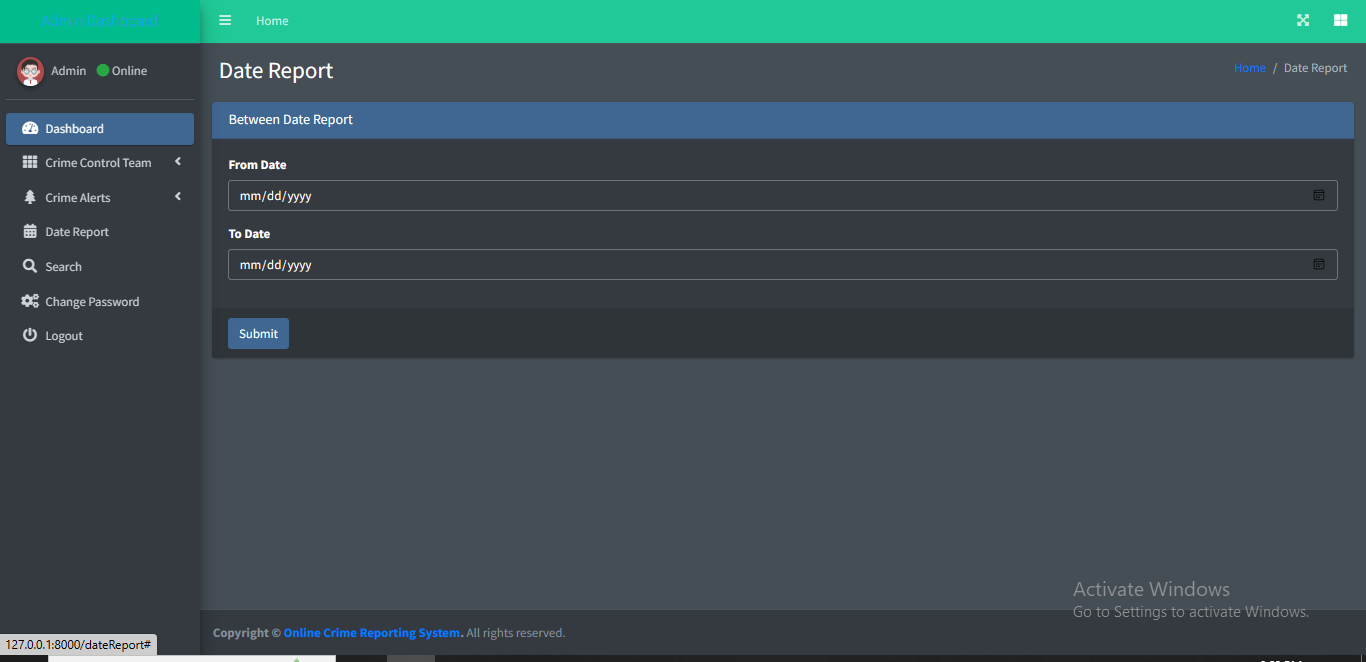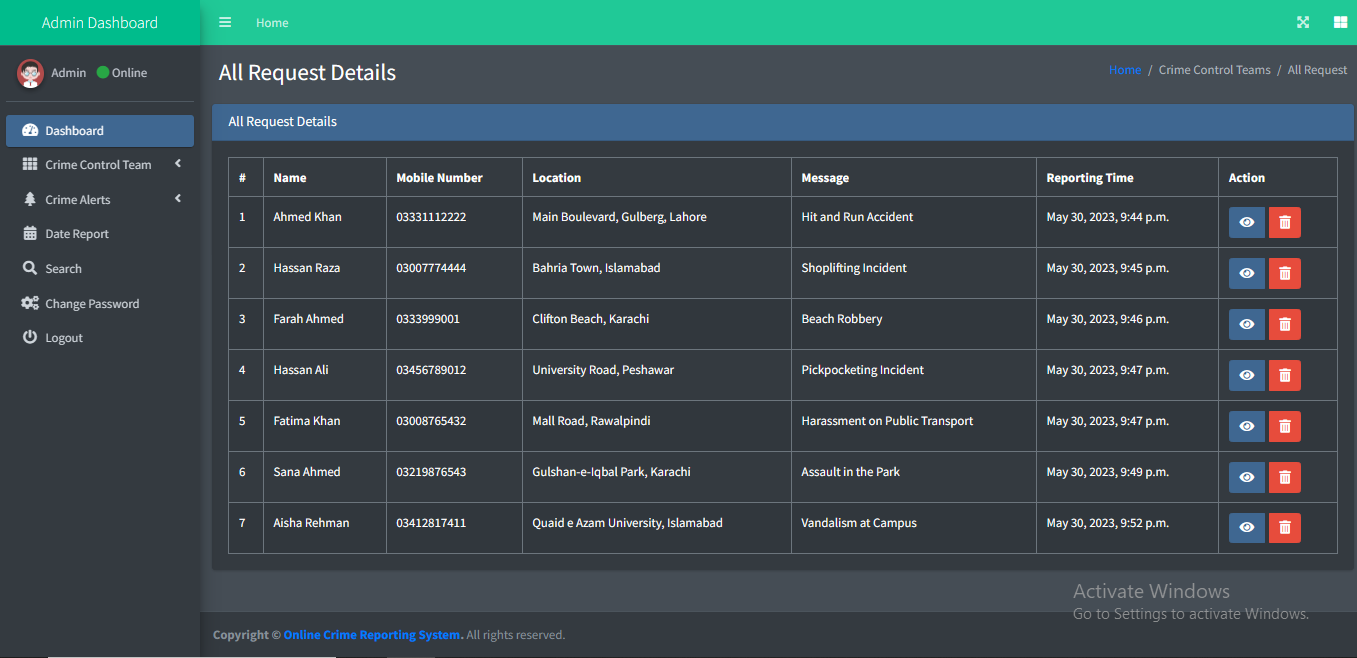Objectives
The main purpose of Online Crime Reporting System :
• To provide a convenient and accessible way for the public to report crimes anytime and anywhere.
• To improve the efficiency of the crime reporting process by eliminating the need to visit police stations physically.
• To increase public confidence in the criminal justice system by enabling prompt and effective responses to reported crimes.
• To promote transparency and accountability in law enforcement by collecting and documenting crime reports systematically.
• To enhance the accuracy and completeness of crime data by enabling law enforcement agencies to collect and analyze crime data more efficiently.
Socio-Economic Benefit
Enhanced Public Safety: The online crime reporting system allows citizens to easily report crimes, suspicious activities, or safety concerns. By providing a convenient and accessible platform.
Improved Efficiency in Reporting: An online crime reporting system streamlines the reporting process, enabling citizens to quickly submit information about crimes or incidents. This efficiency allows law enforcement agencies to respond more promptly and take appropriate actions.
Increased Community Engagement: The online crime reporting system fosters a sense of community engagement and collaboration. This engagement can strengthen trust between the community and the authorities, leading to more effective crime prevention and resolution.
Support for Law Enforcement Agencies: The online crime reporting system can alleviate the workload of law enforcement agencies by automating certain processes and reducing paperwork. This allows officers to focus more on proactive policing, investigations, and community engagement. By providing accurate and timely information, the system enables faster and more effective responses to reported crimes.
Methodologies
1.Waterfall Methodology:
The Waterfall methodology follows a sequential and linear approach to software development. It consists of distinct phases, where each phase depends on the completion of the previous one.
i.Requirements Gathering: Gather detailed requirements by conducting interviews, surveys, or discussions with stakeholders, including law enforcement agencies, administrators, and potential users.
ii.System Design: Design the system architecture, database schema, and user interfaces based on the gathered requirements.
iii.Implementation: Develop the different modules of the online crime reporting system, including user registration, crime reporting, notifications, and admin functionalities.
iv.Testing: Conduct comprehensive testing to ensure the system functions as intended, including unit testing, integration testing, and user acceptance testing.
v.Deployment: Deploy the system on a web server, ensuring proper configuration and setup.
vi.Maintenance: Provide ongoing support, bug fixing, and system updates as necessary.
2.Agile Methodology:
The Agile methodology focuses on iterative and incremental development, emphasizing flexibility and collaboration.
i. Sprint Planning: Break down the project into smaller tasks and plan iterative development cycles.
ii. Backlog Creation: Create a backlog of user stories or features that need to be implemented, prioritizing them based on their importance and value.
iii. Sprint Execution: Develop and deliver a working increment of the online crime reporting system within each sprint. Continuously collaborate with stakeholders and adapt to changing requirements.
iv. Daily Stand-ups: Conduct short daily meetings to discuss progress, challenges, and plans for the day, promoting transparency and team coordination.
v. Sprint Review: Review the completed work at the end of each sprint, gather feedback from stakeholders, and make any necessary adjustments to future sprints.
vi. Continuous Integration and Testing: Regularly integrate and test new features to ensure functionality and detect issues early.
vii. Continuous Deployment: Deploy the system to a staging environment or production environment as soon as a satisfactory increment is ready.
viii. Iterative Improvement: Reflect on the development process, learn from each sprint, and implement improvements in subsequent iterations.
Outcome
The outcome of online crime reporting system project will be a fully functional and user-friendly web application that enables users to report crimes, assists law enforcement agencies in managing and addressing those reports, and contributes to community safety. Here are some specific outcomes:
User Registration and Authentication: Users can create accounts, log in securely, and access the system's features based on their roles (e.g., citizens, administrators, law enforcement personnel).
Crime Reporting: Users can submit detailed reports about crimes, providing information such as the type of crime, date, time, description, and any supporting evidence or media.
Notification System: Users can receive notifications about the status of their reported crimes, including updates on investigations, case resolutions, or additional information requested by law enforcement.
Admin Dashboard: Authorized personnel, such as administrators or law enforcement officers, will have access to an administrative dashboard where they can manage reported crimes, assign investigations to officers, generate reports, and perform administrative tasks efficiently.
Search and Filtering: The system will provide search and filtering functionality, allowing users and administrators to search and filter reported crimes based on various criteria like date, crime type, or status.
User-Friendly Interface: The application will have a user-friendly and intuitive interface, making it easy for users to navigate, report crimes, and access relevant information. Proper attention will be given to usability, responsiveness, and accessibility considerations.










